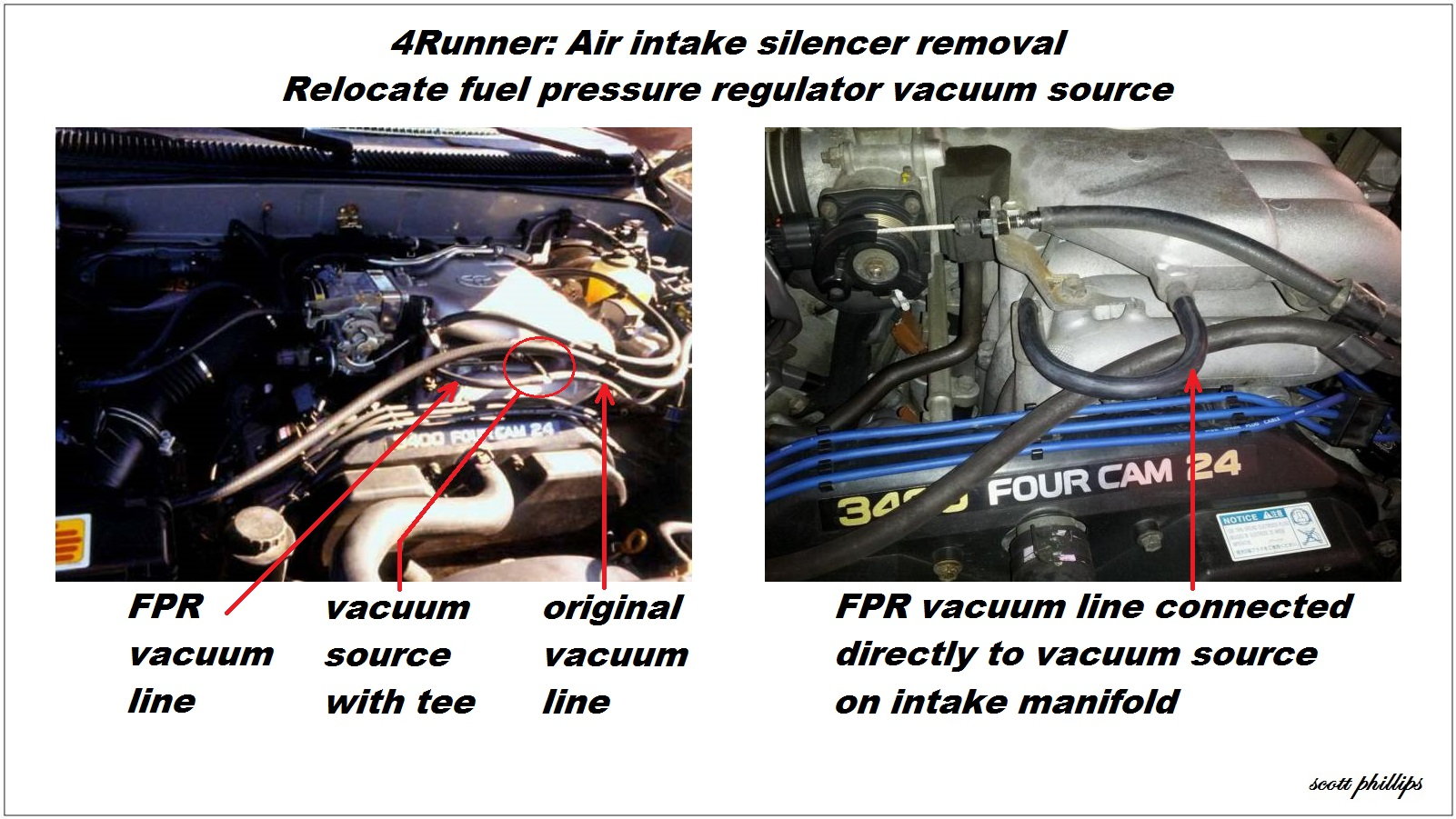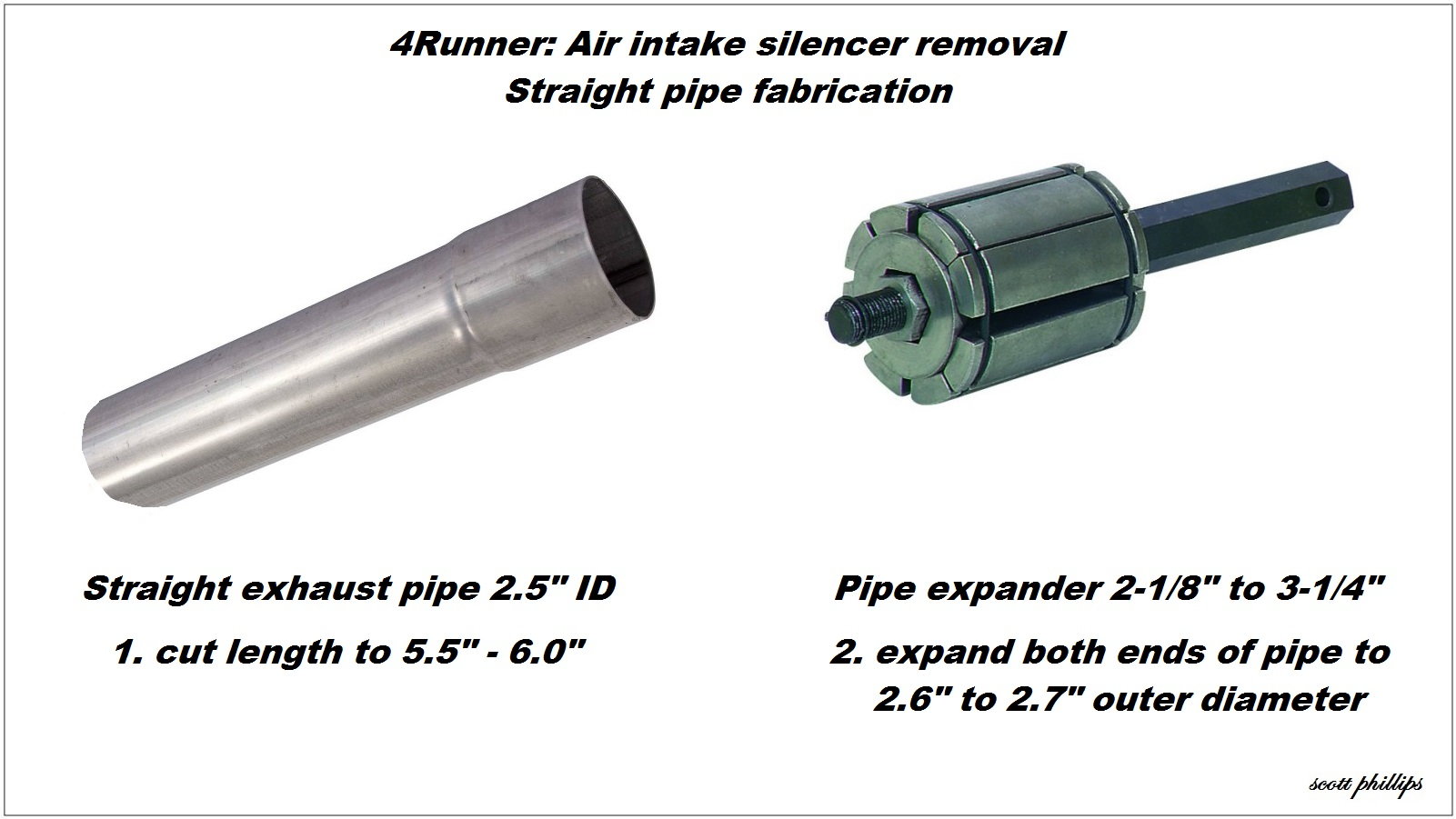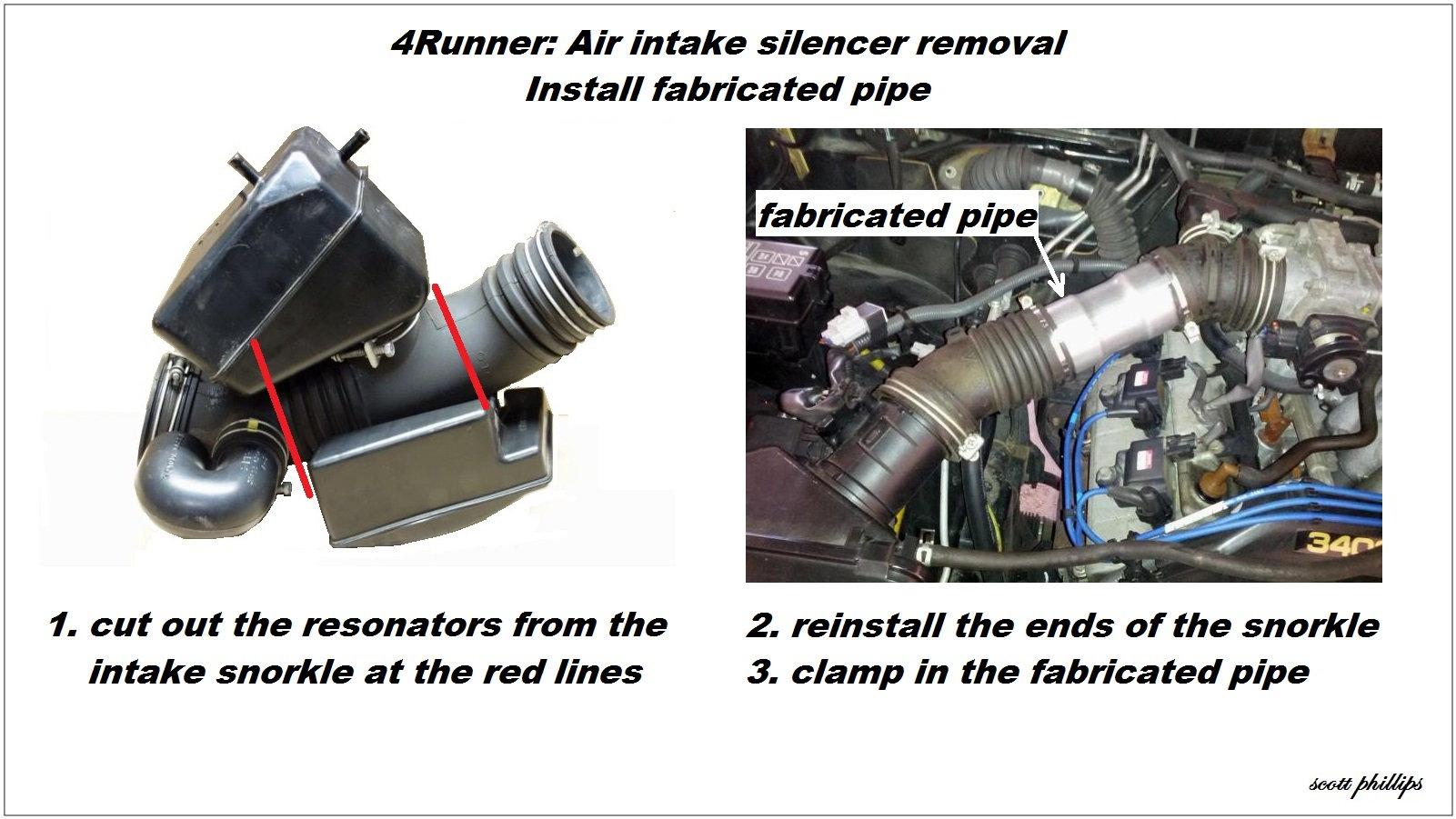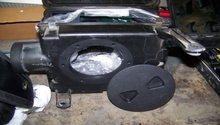Toyota 4Runner 1996-2002: How to Remove Air Intake Silencer
In your own driveway, for little expense and with simple tools, you can unleash the aggressive sound and power that is lurking in your 4Runner intake.
This article applies to the Toyota 4Runner (1996-2002).
The 5VZ-FE engine in your 4Runner is a reciprocating air pump. When one cylinder begins the intake stroke, the intake valves open and air rushes into the open cylinder through the intake snorkle and manifold. At the end of the intake stroke the intake valves close and the in-rushing air slams against the closed valves. The sudden stop sends a pressure wave back through the intake manifold and snorkle. Each of the six cylinders rapidly produce these pulsating pressure waves, which can be quite loud. To quiet the intake noise, Toyota adds an air intake silencer to the snorkle, and its chambers act as a pulsation damper to absorb the pressure waves. Many 4Runner owners remove the intake silencer and find the V6 intake generates a strong, throaty growl.


Materials Needed
- Section of 2.5" ID exhaust pipe
- Exhaust pipe expander tool
- Two medium hose clamps
- Vacuum hose and tees
- Socket wrench set
- Hacksaw
- Razor knife
- Duct tape
Step 1 – Relocate vacuum source
Your 4Runner will have one vacuum line from the front resonanator (FPR) to the fuel pressure regulator. Depending on the model year, you may have an additional vacuum line from the resonator to the power steering pump. The vacuum line(s) must be relocated to the vacuum source on the front of the intake manifold.
- Remove the original vacuum line from the source on the intake manifold.
- Use a short piece of vacuum hose to connect a tee to the intake manifold source.
- Reconnect the original vacuum line to the tee.
- Remove the fuel pressure regulator vacuum line from the resonator and connect it to the tee.
- If needed, connect the power steering vacuum line to the intake manifold source by replacing the tee with a 4-way splitter.
In some cases, the intake manifold source may be unused and capped; and you can connect the fuel pressure regulator line directly to it.

Figure 2. Relocate fuel pressure regulator vacuum source.
Pro Tip
In 2002, Toyota changed the vacuum system. The new source for the relocated FPR vacuum is a capped nozzle at the rear of the intake manifold.
Step 2 – Remove resonators and test before cutting
- Use a socket wrench to loosen the clamps and remove the two resonators.
- Duct tape over the resonator holes in the snorkle, so they are air-tight.
- Idle the engine and check that the vacuum connections are tight. (A vacuum leak will whistle or shriek.)
- Test drive the 4Runner. With the resonators removed, you will have a fair idea how loud the intake will sound. If it is not satisfactory, you can return everything to stock, with no damage.
Step 3 – Fabricate intake straight pipe
The section of 2.5" ID exhaust pipe must be expanded to 2.6" to 2.7" OD to fit into the rubber snorkle tightly.
- Cut the exhaust pipe length to 5.5" to 6" as needed per your application.
- Expand both ends of the pipe to 2.6" to 2.7" OUTER DIAMETER.

Pro Tip
To ensure a good air seal, test fit the pipe as you work it.
Step 4 – Cut the snorkle and install the straight pipe
- Cut the snorkle at the red lines and remove the center, resonator section.
- Loosely install the two snorkle ends on the mass airflow sensor and throttle body. Then fit the straight pipe into place.
- When all parts are aligned, tighten the hose clamps on the mass airflow sensor and throttle body, then tighten the two hose clamps on the straight pipe.

Pro Tip
The J-pipe on the bottom of the snorkle is a water trap. Removing the J-pipe could result in water ingestion, particularly off-road.
Step 5 – Test drive
ECU Relearn (Optional)
Pull the electronic fuel injection (EFI) fuse for 30 minutes, then replace it. This allows the ECU to do a mixture relearn. However, it is not necessary, as the ECU will also learn as you drive.
- If the 4Runner is RPM hunting somewhat during idle, allow it to idle for about 15 minutes before driving.
- Check the intake ducting and vacuum lines for leaks.
- Enjoy the aggressive snarl of your 5VZ-FE intake.
Related Discussions
- 3rd Gen Intake Mod Question - YotaTech.com
- Intake Silencer Removal Mod - YotaTech.com
- Intake Silencer Removal Update for 2002 Rigs; Vacuum source - YotaTech.com






